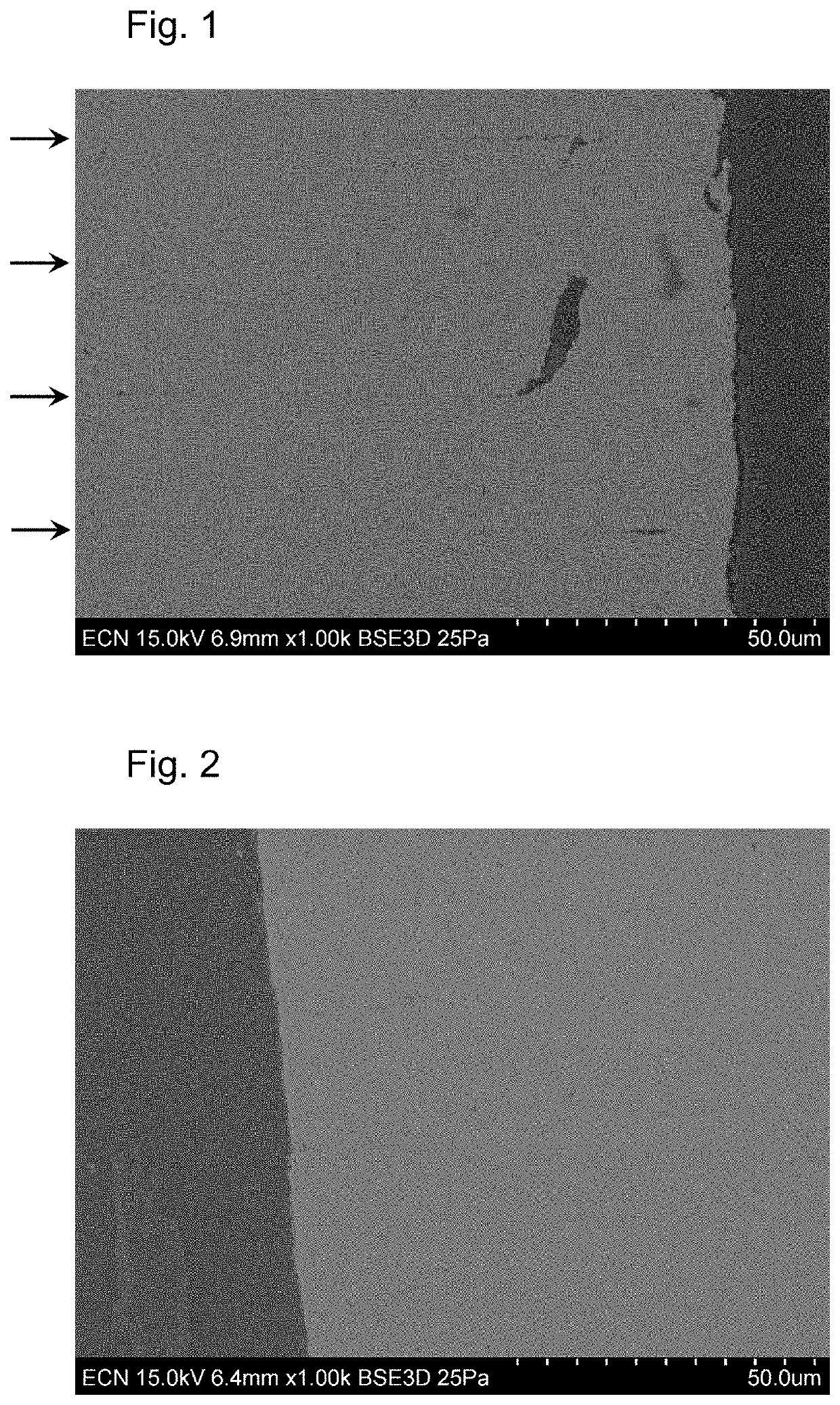Three-dimensional object and manufacturing method thereof
a manufacturing method and three-dimensional object technology, applied in the direction of additive manufacturing processes, manufacturing tools, additive manufacturing with solid and fluid, etc., can solve the problems of product breakage and product quality reduction, and achieve the effect of improving attachment, avoiding tension building, and increasing flowability
- Summary
- Abstract
- Description
- Claims
- Application Information
AI Technical Summary
Benefits of technology
Problems solved by technology
Method used
Image
Examples
example
[0054]A radiation-curable slurry for additive manufacturing was made of 28 wt % of the polymerizable resin A (Tg=34° C.), comprising neopentyl glycol propoxylate (2 PO) diacrylate, 0.5 wt % of photoinitiator bis(2,4,6-trimethylbenzoyl)-phenylphosphineoxide (Irgacure ir819), 71.5 wt % of zirconium oxide (ZrO2) particles. A slurry was made using a high speed mixer and then heated to a temperature of 60° C. The printing was performed on an Admaflex printer at the same temperature, using radiation with a wavelength between 390 and 420 nm with a curing time of 2 s and a layer thickness of 20 μm. A control experiment was performed wherein the slurry was at room temperature (about 20° C.), and printing was performed at that same temperature. The bodies of both experiments were debinded and converted in air at a top temperature of 1000° C. Sintering occurred at a temperature of 1500° C. After sintering, a zirconium oxide body was obtained.
[0055]The resulting bodies were investigated by the ...
PUM
| Property | Measurement | Unit |
|---|---|---|
| temperature | aaaaa | aaaaa |
| thickness | aaaaa | aaaaa |
| thickness | aaaaa | aaaaa |
Abstract
Description
Claims
Application Information
 Login to View More
Login to View More - R&D
- Intellectual Property
- Life Sciences
- Materials
- Tech Scout
- Unparalleled Data Quality
- Higher Quality Content
- 60% Fewer Hallucinations
Browse by: Latest US Patents, China's latest patents, Technical Efficacy Thesaurus, Application Domain, Technology Topic, Popular Technical Reports.
© 2025 PatSnap. All rights reserved.Legal|Privacy policy|Modern Slavery Act Transparency Statement|Sitemap|About US| Contact US: help@patsnap.com

